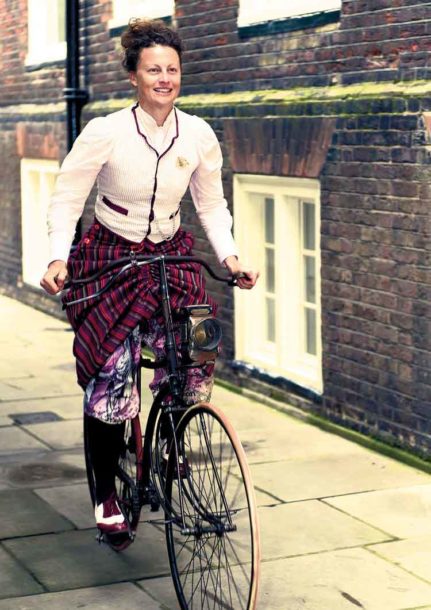
Picture: Charlotte Barnes
Brixton dressmaker Alice Bygrave was one of several nineteenth century female designers determined to make life easier for women cyclists.
Women’s clothing in those pre-Lycra days was not good for cycling – even when men who disapproved of women on two wheels were not hurling abuse or stones.
Bygrave invented a two-pulley system to keep the skirt away from both the chain and the wheels. She secured her design with patent number 17,145 in 1895.
We owe our present day knowledge of this forerunner of today’s Brixton designers and makers to Dr Kat Jungnickel, a senior lecturer at Goldsmiths, University of London, whose book Bikes and Bloomers
, published in April, tells Alice Bygrave’s story along with others.
“Women responded to the social, material and technical challenges to their freedom of movement with vivid creativity,” says Dr Jungnickel.
“They actively and directly worked with and around barriers that sought to prevent them from cycling and engaging more broadly in public life.
“Their designs offered the means for women to move independently, un-chaperoned, safely and at speed, and through patenting forged new paths into social, cultural and economic worlds.”
Dr Jungnickel says that the Bygrave skirt works very well on and off a bike. The gathered fabric is comfortable to sit on or, as Bygrave wrote: “This raising of the skirt before and behind leaves the sides of it festooned, as it were, over the knickers”.
Should you wish to try the skirt yourself, sewing patterns for it and other 19th century cycling garments are available from the Bikes and Bloomers website profits go to the London Bike Kitchen.













